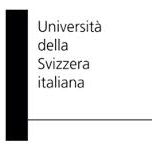Request Demo
Last update 08 May 2025
SDF-1 x HMGB1
Last update 08 May 2025
Related
1
Drugs associated with SDF-1 x HMGB1Target |
Mechanism HMGB1 inhibitors [+1] |
Active Org. |
Originator Org. |
Active Indication |
Inactive Indication- |
Drug Highest PhasePreclinical |
First Approval Ctry. / Loc.- |
First Approval Date20 Jan 1800 |
100 Clinical Results associated with SDF-1 x HMGB1
Login to view more data
100 Translational Medicine associated with SDF-1 x HMGB1
Login to view more data
0 Patents (Medical) associated with SDF-1 x HMGB1
Login to view more data
70
Literatures (Medical) associated with SDF-1 x HMGB101 Jun 2024·Regenerative Therapy
Enhancement of tracheal cartilage regeneration by local controlled release of stromal cell-derived factor 1α with gelatin hydrogels and systemic administration of high-mobility group box 1 peptide
Article
Author: Okamoto, Tatsuya ; Ogi Suzuki, Kumiko ; Hatano, Etsuro ; Tamai, Katsuto ; Tabata, Yasuhiko
01 Oct 2023·European review for medical and pharmacological sciences
Combined extract (Curcuma longa-Glycyrrhiza glabra) alleviates the inflammations of Achilles tendinopathy in Wistar rats.
Article
Author: Fitri, L E ; Hidayat, M ; Soeharto, S ; Handoyo, H R ; Sardjono, T W
01 Apr 2023·Journal of Microbiology
CXCL12/CXCR4 Axis is Involved in the Recruitment of NK Cells by HMGB1 Contributing to Persistent Airway Inflammation and AHR During the Late Stage of RSV Infection
Article
Author: Tang, Zhengzhen ; Liu, Enmei ; Yu, Guangyuan ; Chen, Sisi ; Tang, Wei
Analysis
Perform a panoramic analysis of this field.
login
or

AI Agents Built for Biopharma Breakthroughs
Accelerate discovery. Empower decisions. Transform outcomes.
Get started for free today!
Accelerate Strategic R&D decision making with Synapse, PatSnap’s AI-powered Connected Innovation Intelligence Platform Built for Life Sciences Professionals.
Start your data trial now!
Synapse data is also accessible to external entities via APIs or data packages. Empower better decisions with the latest in pharmaceutical intelligence.
Bio
Bio Sequences Search & Analysis
Sign up for free
Chemical
Chemical Structures Search & Analysis
Sign up for free
